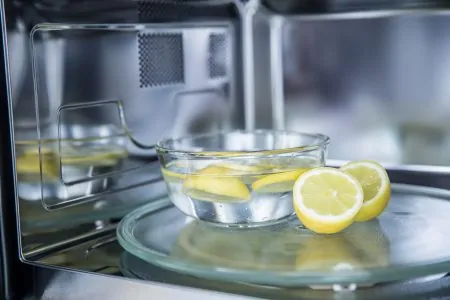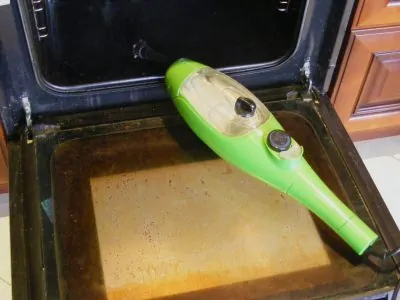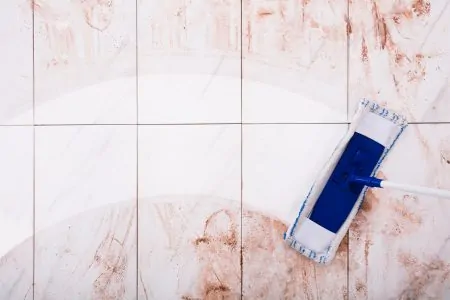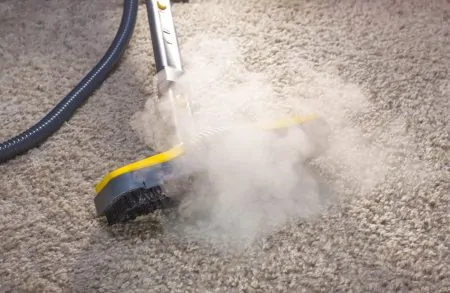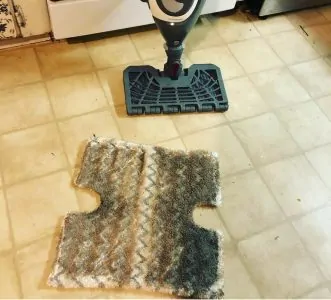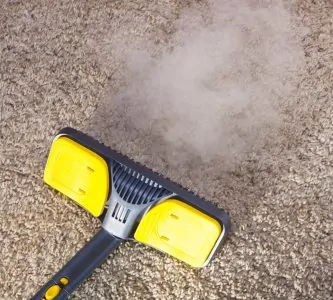Microwaves offer undeniable convenience as you can heat your dinner in a couple of minutes. But you’ve probably also experienced an explosion while heating a big bowl of spaghetti, and now sauce is everywhere?
We’ve all been there. This can be very frustrating because of how difficult it is to clean.
Whether your microwave is disgustingly dirty or just a little grimey, it’s still essential to clean your microwave regularly. Lucky for you, we know a few effective (and easy) ways to clean and disinfect your microwave.
Key Takeaways
- Regularly clean your microwave to prevent bacteria buildup and cross-contamination.
- Use methods like apple cider vinegar, baking soda, or lemon to clean and disinfect the microwave.
- Deodorize the microwave with vinegar, baking soda, or lemon juice to remove unpleasant odors.
- Maintain your microwave by covering food, wiping it regularly, and heating liquids slowly.
Why Clean Your Microwave?
Studies have shown that even before you open your microwave, you could be exposed to some nasty bacteria. The door handle, for instance, is a hot spot for germs and bacteria.
A comprehensive study by Kimberly-Clark showed that sinks and microwave door handles were the most contaminated office areas (1).
Microorganisms need warmth, moisture, and food to multiply — which is what a dirty microwave provides. Allowing food to splatter everywhere without removing it will cause a buildup of old food. As you heat your next meal, you add warmth and moisture to the mix, creating the perfect environment for germs.
Not only will it contaminate your microwave, but it can also contaminate your food. As your meal heats, it creates steam, which rises and loosens the old food stuck in the microwave. This will cause contaminants to drop directly onto your next meal if it isn’t covered.
You might be feeling food poisoning-like symptoms due to this cross-contamination. It’s crucial to look around inside your microwave and clean every tiny corner or crevice to remove all germs.
Keep In Mind
Ways to Clean Your Microwave
Depending on what you have in the cupboard, you can clean your microwave using various methods. Here are our favorites.
Apple Cider Vinegar
Thanks to its acidic nature, apple cider vinegar is an effective way to cut through old buildup inside your microwave. You can also use distilled white vinegar if you only have that to hand. Here’s how to do it:
- Fill a Bowl: Combine equal amounts of water and apple cider vinegar in a microwave-safe bowl. Avoid filling it all the way to prevent any accidental spills.
- Heat: Set the microwave to high heat and heat the vinegar solution for four minutes. As it heats, the steam will help to loosen the buildup within your microwave.
- Wipe: When the time is up, remove the bowl carefully if it’s hot. Take a damp cloth and wipe the entire inside of the microwave. Make sure you get into the corners, top, and underneath the turntable.
Baking Soda
If you notice an unpleasant odor in your microwave, it’s time to deodorize. But how? We prefer baking soda since it effectively absorbs odors and creates a neutral environment. Here’s how to use it:
- Create a Mixture: Mix three tablespoons of baking soda with a cup of water in a microwave-safe bowl. Mix it well to combine.
- Turn Up the Heat: Place the bowl in the microwave and heat for three minutes. As the baking soda heats, it will effectively loosen buildup and other splatters inside the microwave. It will also absorb bad odors, so you can enjoy a clean-smelling microwave.
- Wipe Clean: Remove the bowl carefully, so you don’t burn yourself. Then use a damp cloth to wipe the inside of the microwave. Take the turntable out and give it a good wipe as well as underneath it.
Distilled White Vinegar and Lemon
Vinegar is one of the most popular natural cleaning products you can find — it’s also one of our favorites. What you may not know about vinegar is that it also neutralizes odors and disinfects. It’s the perfect solution for a microwave. Here’s how to use it:
- Make a Solution: Mix one cup of vinegar, one cup of water, and two tablespoons of lemon juice in a microwave-safe bowl. The lemon juice will provide additional grease-cutting power while toning down the strong scent of the vinegar.
- Wipe the Exterior: Use a small amount of the solution on a cloth to wipe down the exterior of the microwave, especially the handle. The vinegar and lemon will disinfect and remove any greasy marks on the outside of the appliance.
- Heat: Place the bowl in the middle of your microwave and heat for two minutes. The vinegar will release steam and quickly loosen buildup while killing bacteria.
- Remove: Take the bowl out of the microwave taking care not to burn yourself. Next, use a damp cloth to wipe the inside of the microwave. Then, remove the turntable to wipe underneath and around it.
Dish Soap
Dish soap is something we all have in our homes. It’s easy to use and can add a fresh scent to your microwave. Here’s how to clean your microwave using dish soap:
- Fill a Bowl: Add two cups of warm water and one tablespoon of dish soap in a microwave-safe bowl. Give it a good mix to incorporate.
- Heat in Microwave: Place the bowl in the microwave and heat for two minutes. If the water isn’t steaming, give it another minute or two.
- Wipe to Clean: Remove the bowl carefully from the microwave and wipe the inside with a damp cloth. Pay close attention to the corners and underneath the turntable.
Steam
Steam is a natural and effective way to clean and sanitize your microwave. For this method, all you need is warm water. Here’s how to do it:
- Fill a Bowl: Add two cups of warm water to a microwave-safe bowl. Make sure the water is on the warmer side. This will help to create steam quicker.
- Create Steam: Place the bowl in the microwave and heat for two to four minutes. Check to see if the water is steaming. Once it’s steaming, close the microwave and allow the bowl to sit for a couple of minutes. Because we’re only using water, it must sit for a little while to work its magic.
- Remove and Clean: After carefully removing the bowl from the microwave, take a damp cloth and wipe the inside. Remove the turntable as well to clean thoroughly underneath.
Lemon
Lemon works effectively at cutting through greasy spills within a microwave. It’s also super easy to do, and you’re likely to have everything you need right in your kitchen. Here’s how to clean microwaves with lemon:
- Combine Water and Lemon: Add one cup of warm water to a microwave-safe bowl. Cut a lemon in half and squeeze the juice into the bowl. Add both halves of the lemon to the water.
- Heat: Put the bowl in the microwave and heat on high for three minutes. Once it’s done, leave the bowl in the closed microwave for five minutes. This will give it a little extra time to work, giving you a better result.
- Clean: Take the bowl out of the microwave and use a damp cloth to wipe the inside. Remove the turntable as well and give it a thorough wipe.
Other Ways to Deodorize the Microwave
If your microwave is clean but still has an unpleasant odor from your lunch last Tuesday, you need to deodorize it. This is quickly done using one of these methods:
1. Vinegar and Baking Soda
Start by soaking a sponge in distilled white vinegar. Place it in the middle of the microwave and sprinkle a generous amount of baking soda on top of the sponge.
Microwave it until it’s warm (about 25 seconds), and carefully check the sponge before grabbing it. When you feel confident it won’t burn you, use the sponge with vinegar and baking soda to wipe down the microwave.
The baking soda will effectively absorb odors while the vinegar neutralizes odors and disinfects.
2. Baking Soda
Try this method if you don’t have time to clean the microwave but need to get rid of a stench. Open up a box of baking soda, place it in the center of the microwave, shut the door and leave it overnight. This method is often used to deodorize other areas, such as cabinets, refrigerators, and even cars. Toss the baking soda out afterward; do not use it for baking!
3. Lemon Juice
Add five tablespoons of lemon juice to a microwave-safe bowl. Place it in the microwave and heat for five minutes. When it’s finished, keep the door shut for one hour to allow the lemon to deodorize the space.
4. Vanilla Extract
In a microwave-safe bowl, pour in two cups of warm water. Add two teaspoons of vanilla extract and place the bowl in the microwave. Heat until the water boils — about three minutes. Once it’s done, keep the door shut for 30 minutes.
5. Cloves
In a small bowl, add a quarter of a cup of cloves. Simply place the bowl inside the microwave, shut the door and leave it overnight. Cloves have a strong scent and can neutralize odors.
How to Remove Stains and Grease from Microwaves
Did last night’s soup just make a huge mess in the microwave? Here are three effective stain-fighters to try:
1. Baking Soda Paste
For stubborn stains or spills, make a paste of equal parts baking soda and water. Apply the paste to the area and leave it for five minutes. Then use a sponge to scrub the grease off and finish by wiping with a damp cloth.
2. Vinegar
If you’re having difficulty cleaning the door, try mixing equal parts of vinegar and water in a spray bottle. Apply a generous amount to the glass door and wipe with a sponge. You may need to use extra elbow grease if the stains are tough.
3. Commercial Degreaser
Having a good degreaser at hand can save you in many situations. We prefer the Simple Green All-Purpose Cleaner and Degreaser for the microwave. Simply follow the directions provided by the product you’re using.
Additional Tips for Microwave Maintenance
Preventing a mess is the best way to keep your microwave clean, but how can you do that? Here are a few additional tips to help you keep it clean:
- Cover the food: Covering the food you’re heating is the best and easiest way to avoid a mess. So if a slight sauce explosion happens, the cover will help prevent a mess.
- Wipe it regularly: This is also an easy way to keep your microwave clean. After using the appliance, take a damp cloth and wipe down the sides, ceiling, and turntable. Doing this regularly will help prevent nasty germs and gunk buildup.
- Go slow: If you’re heating liquid food, such as a sauce or soup, go slow. Set the time and heat to a reasonable setting and repeat if necessary. Spills and minor food explosions are more likely to happen when food overheats.
